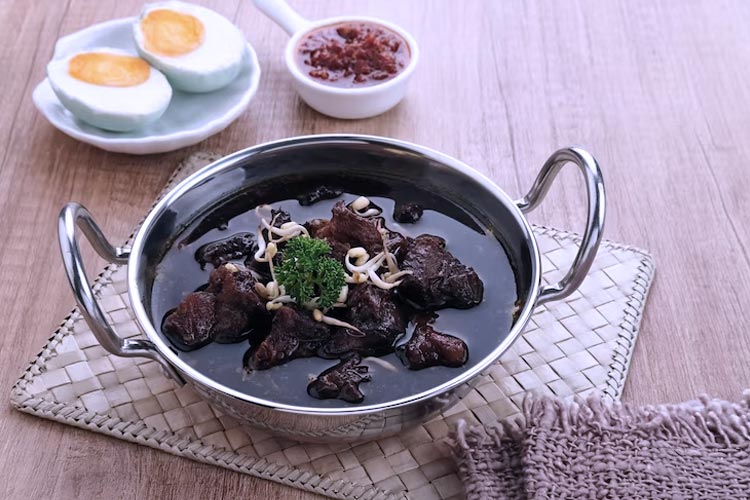All About Rawon, a Tasty Tarditional Beef Soup of East Java

TIMESINDONESIA, JAKARTA – Rawon is another well-known traditional dish from East Java, Indonesia. It is a rich and flavorful beef soup that is popular in Surabaya and throughout the region. This dish is characterized by its dark color, which is derived from the use of keluak, a type of black nut.
The main ingredient of this delicious refreshing dark soup is beef, specifically using cuts such as beef shank or beef ribs, which are cooked slowly until tender. The soup is seasoned with a blend of aromatic spices, including shallots, garlic, ginger, galangal, turmeric, and lemongrass.
Advertisement
However, what gives the soup its distinct taste and color is the addition of keluak. Keluak nuts are pounded to remove their skin and all we need is the dark part inside. The inner part of the nut is then ground into a paste and added to the soup, giving the food its characteristic dark hue and earthy flavor.
The name of Rawon Derived from 'Rawa'
The nut has a unique taste that is often described as a mix of chocolate, coffee, and earthy notes. This is also where the name of the dishes derived from. The dish's name, Rawon, is derived from the Javanese word "rawa" which means "black."
This name reflects the dark color of the soup, which is achieved through the use of keluak nuts. The black color not only adds visual appeal to the dish but also imparts a unique and distinctive flavor.
Traditionally, it is served with rice and a variety of condiments. These may include slices of fried tempeh, bean sprouts, salted duck egg, shrimp crackers, and sambal (chili paste) for those who enjoy some extra heat. The combination of tender beef, aromatic broth, and the rich flavors from the spices and keluak creates a satisfying and hearty dish.
A Brief History of Rawon
According to Grid ID the history of the soup dates back to the era of the Majapahit Kingdom in Java, Indonesia, which thrived from the 13th to the 16th century. Yet the dish has been found on an old manuscript called Taji (901 BC).
Rawon was originally a dish prepared for royal occasions and special events, often served to the nobles and royal family of the Majapahit Kingdom. Over time, it became popular among the wider population of East Java, particularly in the city of Surabaya.
Historically, the soup was prepared using buffalo meat, which was abundant in the region. However, as buffalo meat became less accessible, beef became the more commonly used protein in the dish. The slow-cooking method employed in preparing the food ensures that the beef becomes tender and infuses the broth with rich flavors.
It has evolved over the centuries with variations in ingredients and preparation methods. The addition of various herbs, spices, and condiments has contributed to the diversity of flavors found in different versions of the dish.
Rawon has Gained Its Populary Across the Country
Today, Rawon is not only a beloved dish in East Java but has gained popularity throughout Indonesia. It has become a cultural symbol of Javanese cuisine and is often served in restaurants, warungs (local eateries), and households across the country.
The dish continues to be cherished for its deep, complex flavors and remains an essential part of the culinary heritage of East Java. It is not only beloved for its taste but also for its cultural significance.
Rawon is often served during special occasions and celebrations, and its preparation requires time and attention to detail. The dish represents the culinary heritage of East Java and is a favorite among locals and tourists seeking to experience authentic Indonesian cuisine. (*)
**) Ikuti berita terbaru TIMES Indonesia di Google News klik link ini dan jangan lupa di follow.
| Editor | : Khodijah Siti |
| Publisher | : Sofyan Saqi Futaki |

